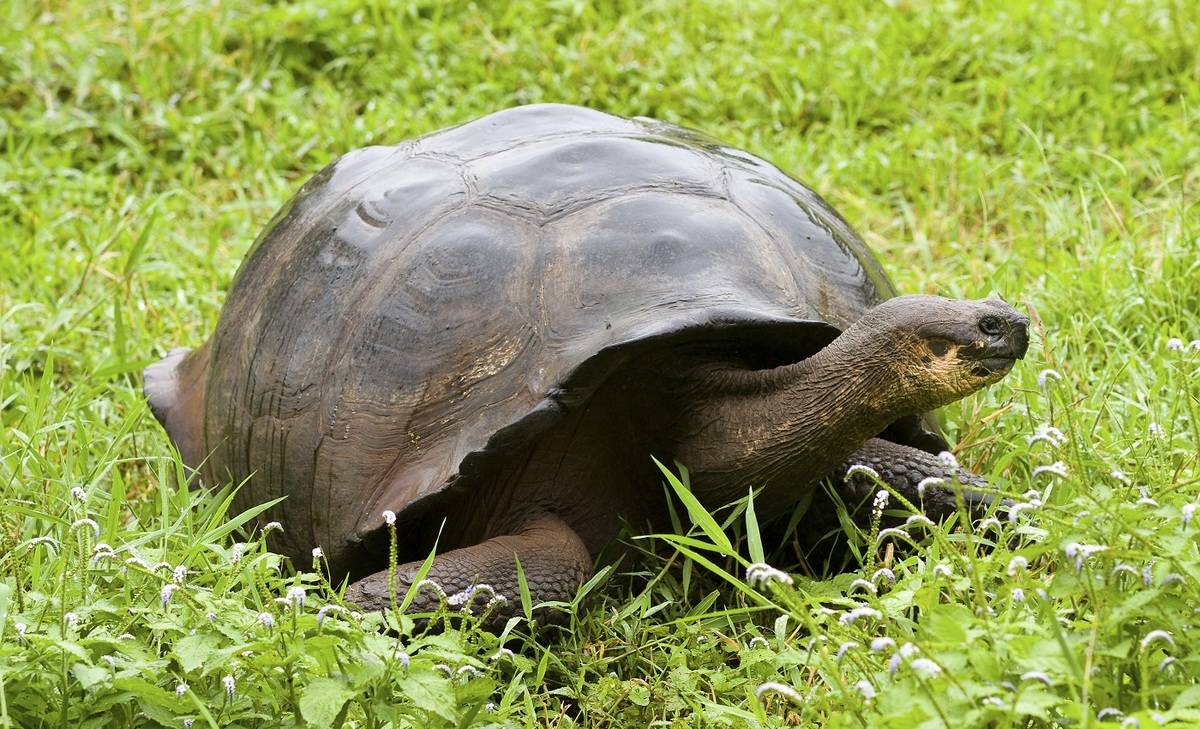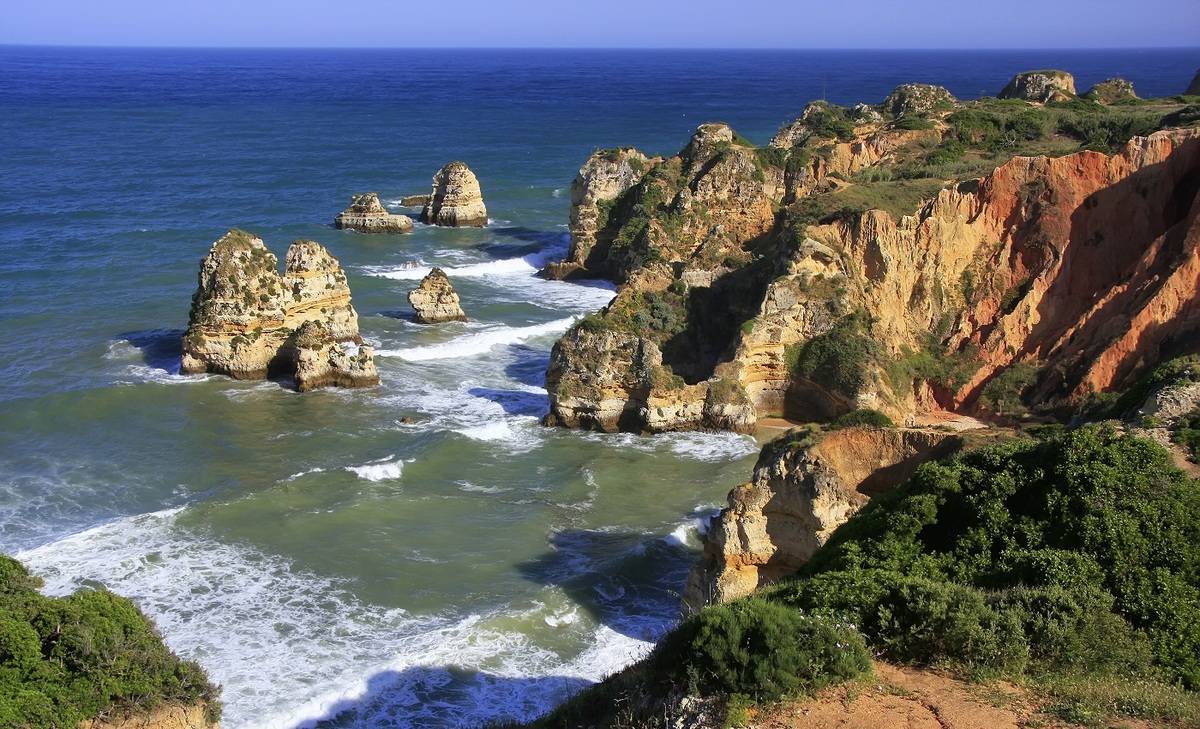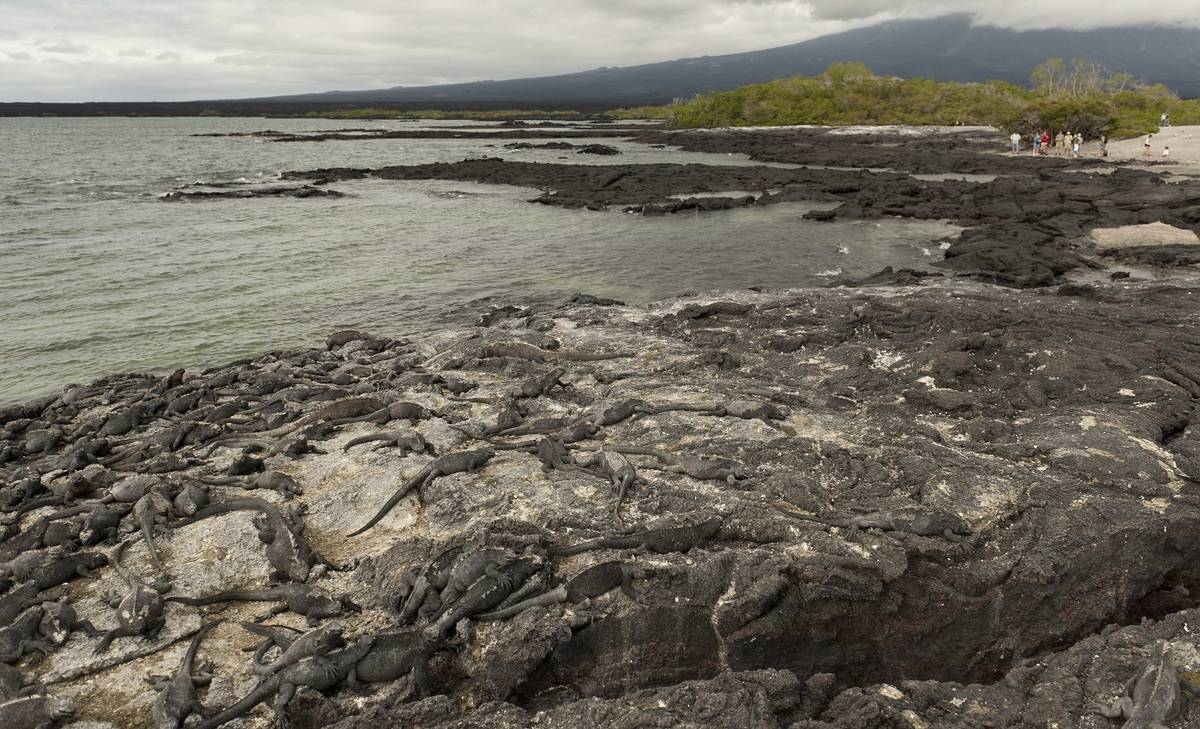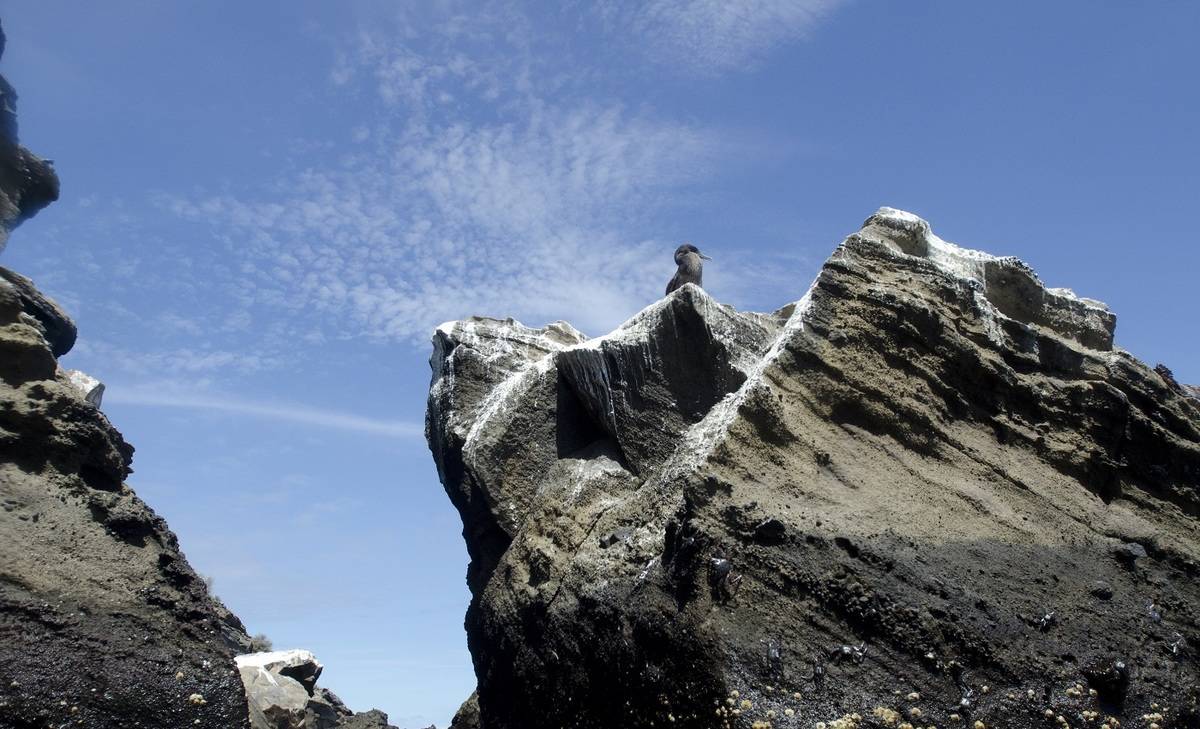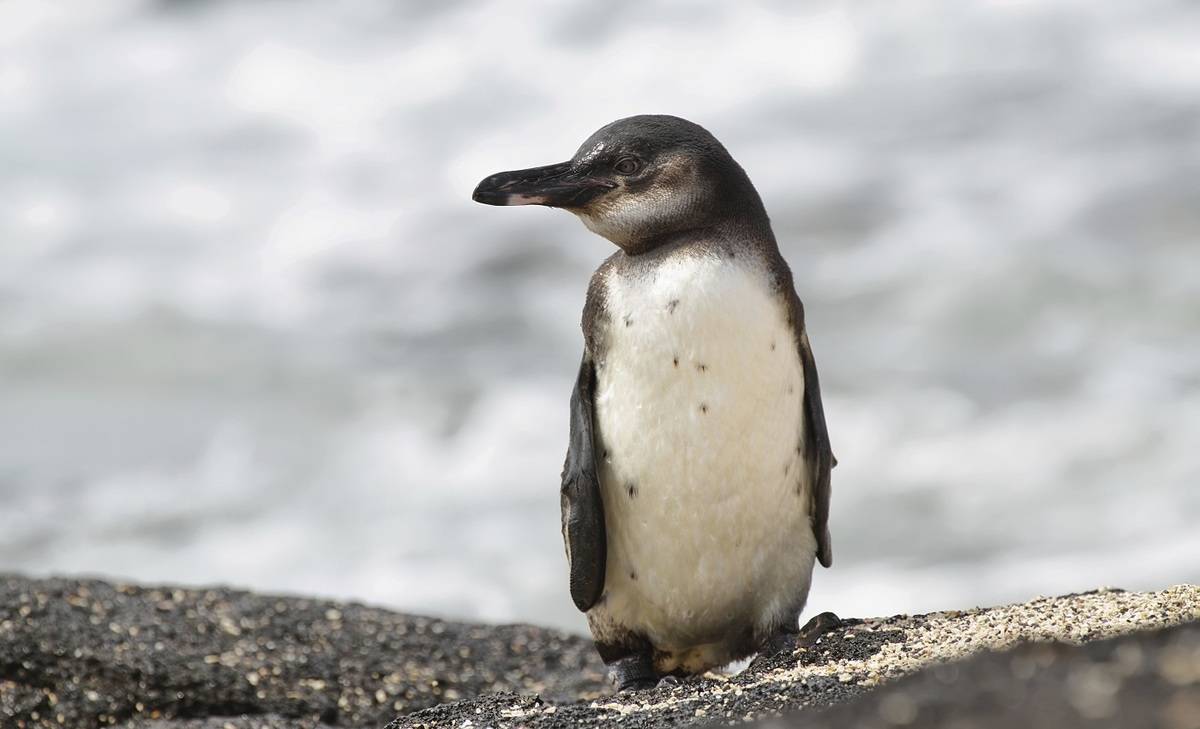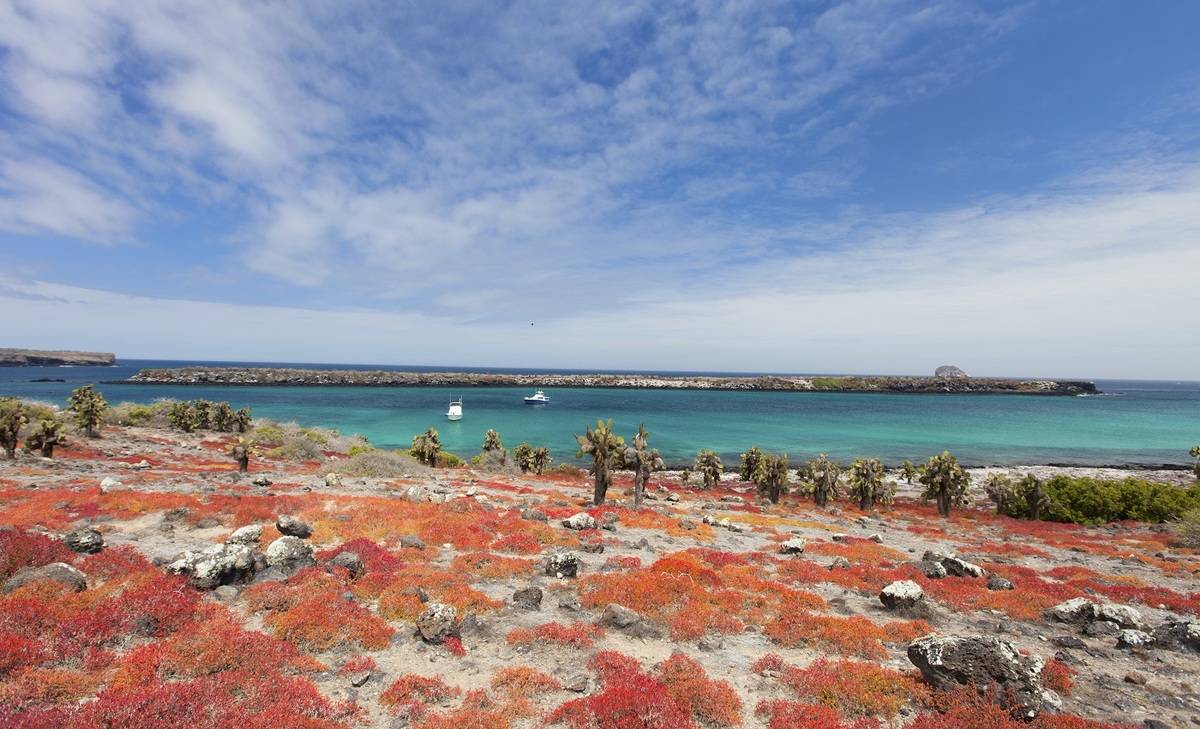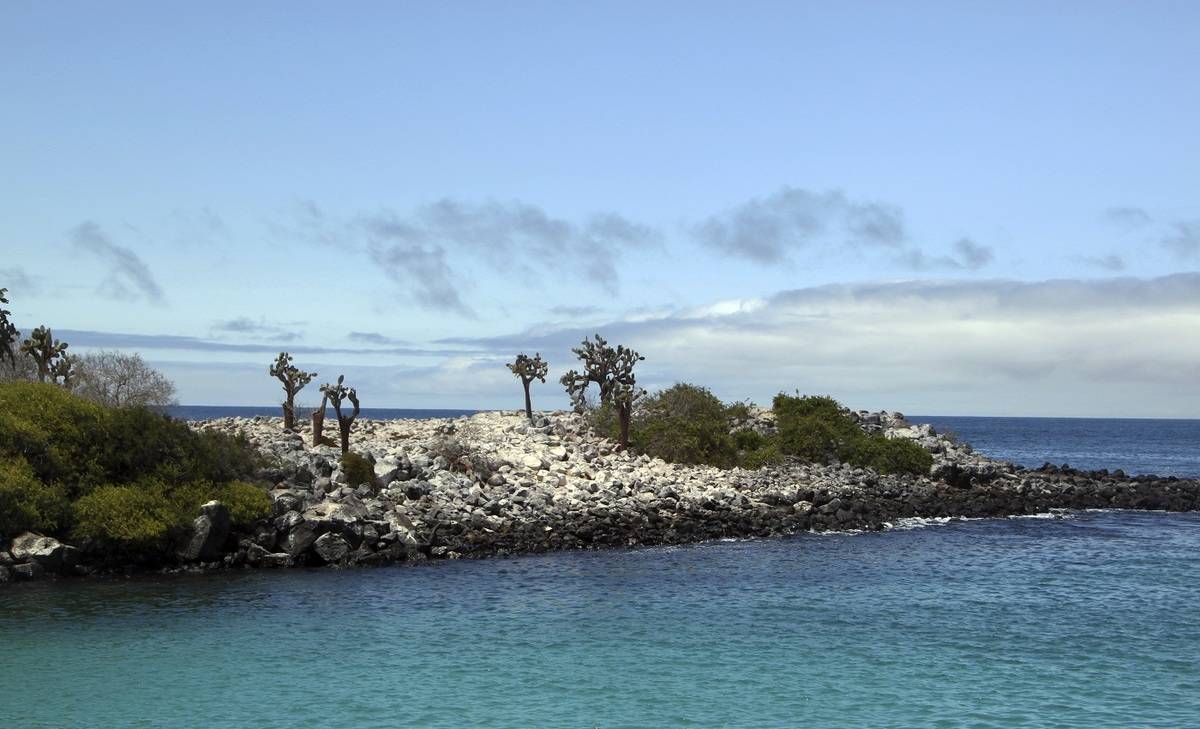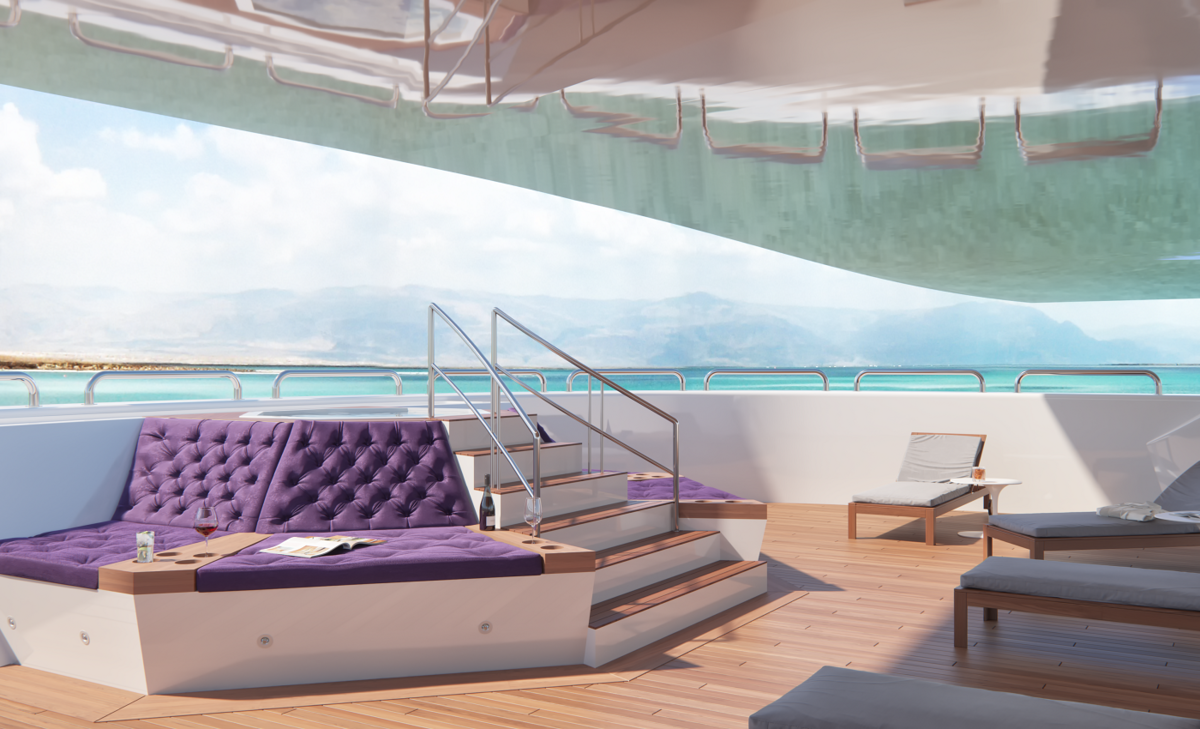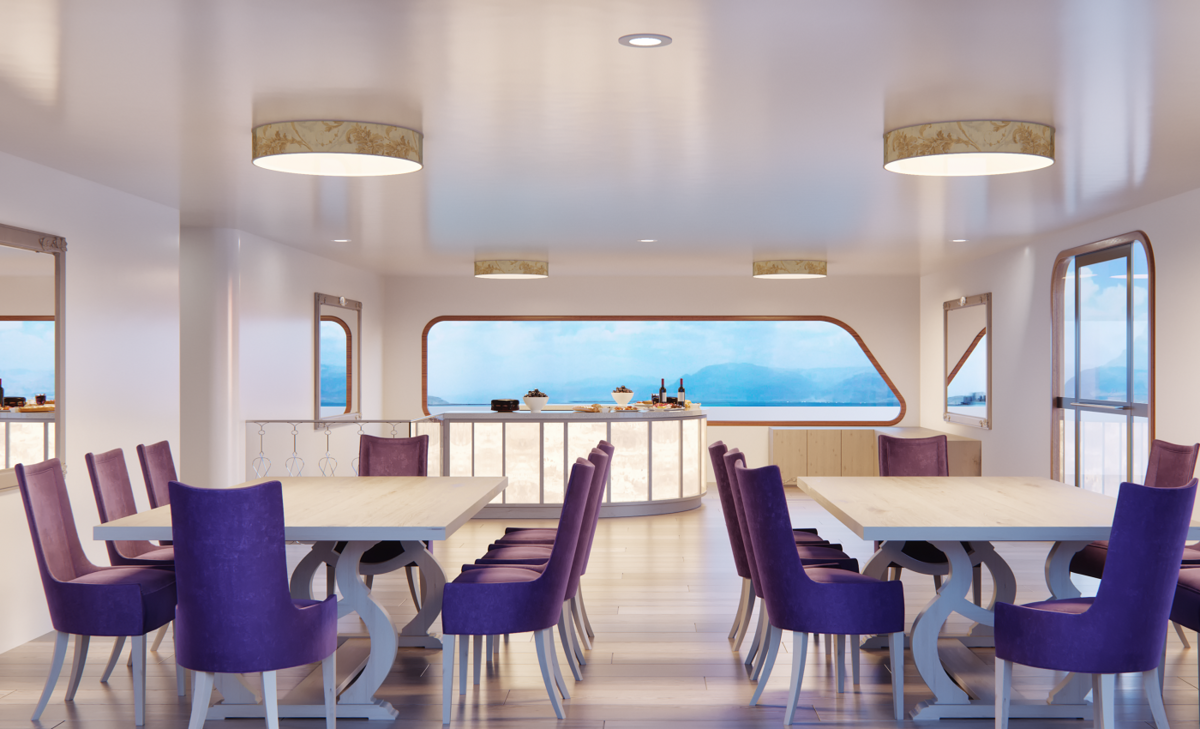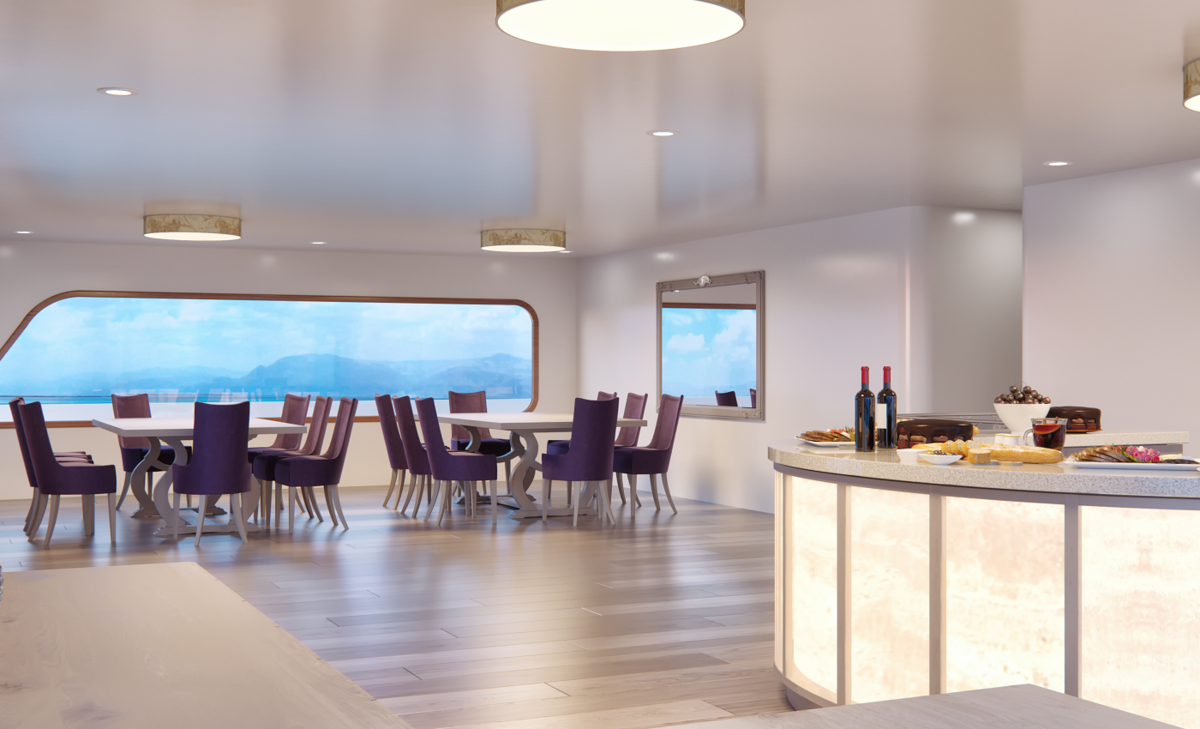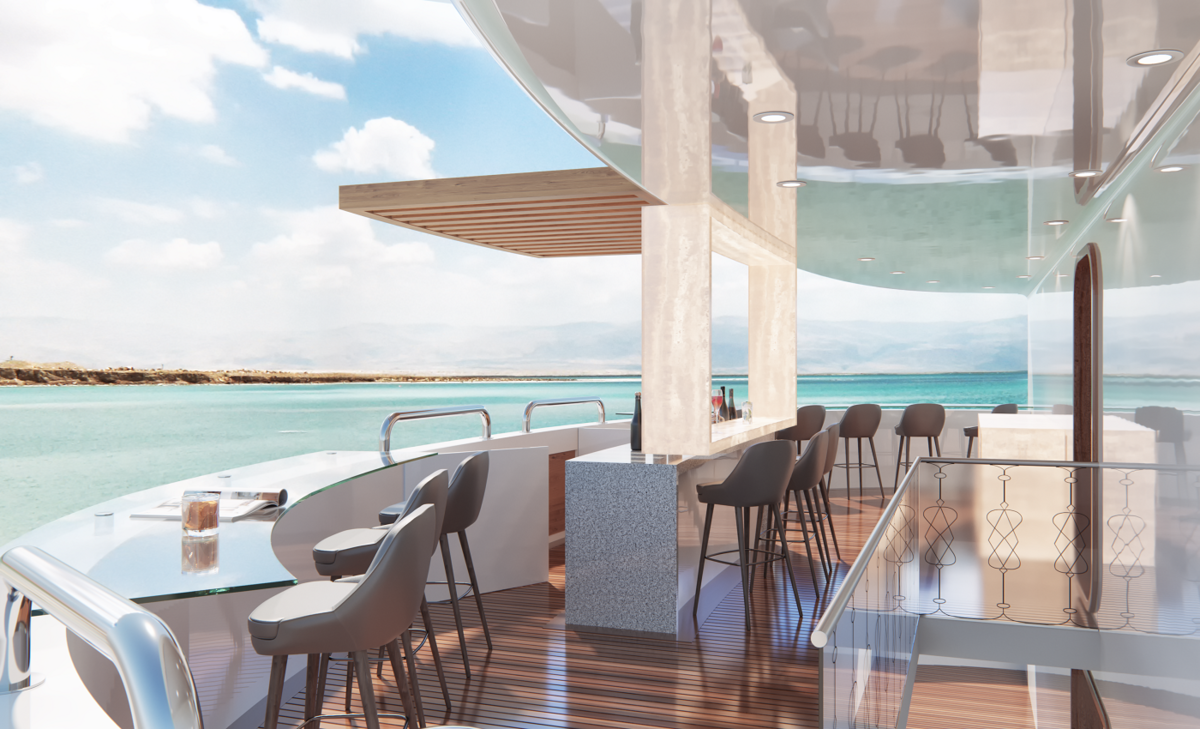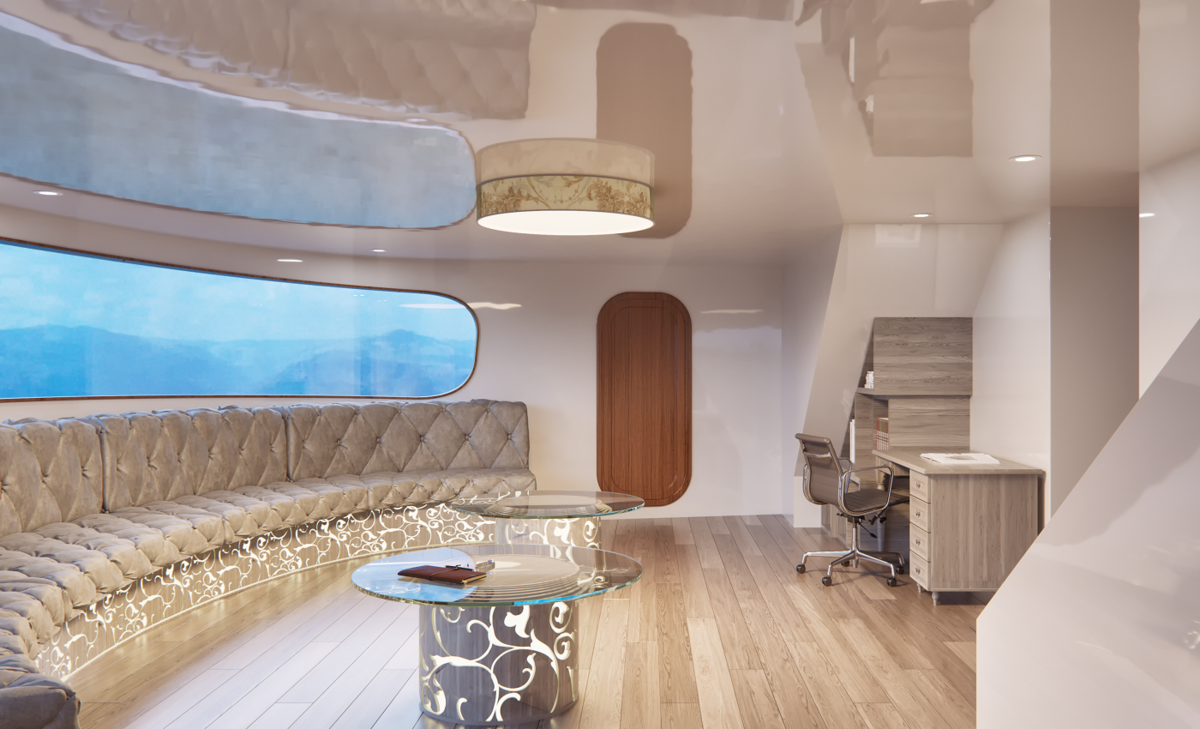Central to West Galapagos Islands
8 Days - M/T Camila
This 8-day itinerary presents the best of the Central and Western Galapagos Islands with additional visits to Genovesa & Espanola Island. Enjoy coastal activities and incredible landscapes in the West, and take your time spotting various shorebirds and admire sea lions lounging along the beaches. Explore Santa Cruz highlands by foot to meet the giant tortoises of Galapagos.

Home » 8 Day M/T Camila: Central to West Galapagos Islands
Itinerary Highlights
- Interesting lava formation on Santiago island & Isabela island
- Hike to a lookout that offer incredible views of Tagus cove
- Visit South Plaza islands - home to the largest sea lion colonies
- Write a message and leave it in the post office barrel at the historic Post Office Bay!
Itinerary in Brief
- Day 1: Arrive to Baltra - Santiago Island
- Day 2: Vicente Roca Point, Isabela - Espinoza Point, Fernandina
- Day 3: Tagus Cove & Urbina Bay, Isabela Island
- Day 4: Elizabeth Bay & Moreno Point, Isabela Island
- Day 5: Charles Darwin Station & Santa Cruz highlands
- Day 6: Santa Fe & South Plaza Islands
- Day 7: Post Office Bay, Devil's Crown and Cormorant Point, Floreana Island
- Day 8: Interpretation Centre - Transfer to San Cristobal airport
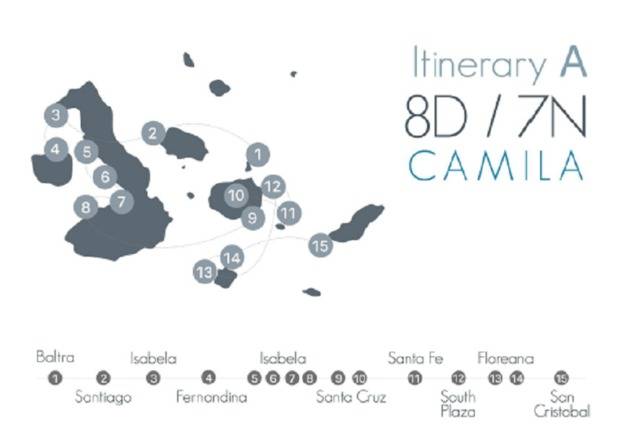
Day 1: Arrive to Baltra - Santiago Island
Welcome to the Galapagos Islands aboard the M/T Camila. The guide and crew will greet you and show you to your accommodations upon your arrival. Afterwards, the guide and cruise manager will hold a short briefing on all safety and emergency protocols, different areas of the vessel and the normal routine of the itinerary.
Southeast of Santiago Island, Sullivan Bay shows off an interesting lava field with a geologically young flow from 1897. Because the rocks are black and formed of lava, it can get quite hot. Appropriate footwear is required for this visit in order to protect your feet.
Day 2: Vicente Roca Point, Isabela - Espinoza Point, Fernandina
Isabela Island is the largest of all the Galapagos islands. It is most famously known as the island shaped as a seahorse. While in the panga, keep an eye out for the magnificent mola-mola sunfish!
Between the Bolivar Channel dividing Isabela and Fernandina Islands lies Espinosa Point. The highlight of this visit is the nesting colony of the Flightless Cormorant, which over time lost its ability to fly due to Evolution's distinct changes, helping it swim better and faster. Also seen at this site is the incredible remnants of solid magma, but watch your step for the many marine iguanas known to crowd the area.
Day 3: Tagus Cove & Urbina Bay, Isabela Island
If you like historic remnants, then you will enjoy finding what was left behind from pirates and sailors in the 1800s. This site was one of their preferred pit stops while traveling the seas. The hike here will provide incredible views of the cove and on the other side the mangrove forest where the last 35 pairs of Mangrove finches thrive.
Millions of years ago, Urbina Bay was once laying on the ocean floor. Volcanic uplifts caused it to rise and now it is occupied by sea lions, land iguanas and flightless cormorants. It is a great place to enjoy some free time on the beach or the guide may suggest a hike.
Day 4: Elizabeth Bay & Moreno Point, Isabela Island
On the eastern coast of Isabela Island is Elizabeth Bay with many islets. These parts are visited by panga and on the rocky shores Galapagos penguins can be seen. There is a large abundance of marine life that can be seen in the clear waters. It is great for snorkeling.
The beautiful rocky shores of Moreno Point offers a plethora of birds to be seen. It is truly a birders delight. The main attraction are the coast lagoons where white tipped sharks can be seen and the panoramic views of Sierra Negra and Cerro Azul volcanoes cannot be missed.
Day 5: Charles Darwin Station & Santa Cruz highlands
The Charles Darwin Research Station is one of the Galapagos Island’s most important sites for visitors. It is a research facility that has an extensive collection of Galapagos plant life specimens carefully preserved and also acts as a biological research station and active breeding center operated by the Charles Darwin Foundation.
The highlands are located in the northern part of Santa Cruz and can reach elevations up to 1500 meters. This area is rich with hills, ferns, volcanoes and wildlife. A great contrast to the molten lava harden beaches and rocky areas of other islands already seen. It is home to giant tortoises, mockingbirds, finches and many other species.
Day 6: Santa Fe & South Plaza Islands
Santa Fe is home to the endemic Santa Fe iguana. The island was created by a volcanic uplift that now hosts a forest of Opuntia and Palo Santo trees. It is a picturesque island with two different trails, one leading to a scenic viewpoint and the other leading to a small beach.
This small island with steep cliffs was formed by rising lava. It is home to one of the largest sea lion colonies, as well as colorful land iguanas. The most characteristic plant on the island is the Sesuvium that turns bright red during the dry season, creating a contrast on the island. The amazing colors of the turquoise waters against the black lava create a setting for amazing photography opportunities.
Day 7: Post Office Bay, Devil's Crown and Cormorant Point, Floreana Island
Ask the Cruise Manager for one of our complimentary postcards to write a message and address it home. Leave it in the barrel used before by pirates and sailors. While your there, see if there are any other postcards you can take home with you to send for fellow travelers who have already left their messages!
Just off of Floreana Island is a fantastic snorkeling site known as Devil’s Crown. Various tropical fish species can be seen, even galapagos sharks or white-tipped sharks. Sea lions can be seen hunting for fish or playing through schools of hundreds of fish in circles, it is really quite the site to see.
Cormorant point on Floreana Island is a great place to see one of the places where flamingos live in salt water lagoons. Walking along the trail after the lagoon leads to a hidden beach great for walking in the soft sand. Watch your feet if walking in the water, stingrays love to hang out here as well.
Day 8: Interpretation Centre - Transfer to San Cristobal airport
At the Interpretation Centre you’ll find many different exhibits on information about the natural and geological history of the Galapagos Islands. It first opened in 1998 to help enforce the efforts of wildlife protection and the natural environment through means of population and tourist control.
After a visit to the Interpretation Centre, you will be transferred to San Cristobal airport for your departure flight.
Cabin Details
Standard Cabin
2 single beds or 1 double bed, private bathroom, private balcony, ample storage, air conditioning & picture window.
M/T Camila Deckplan
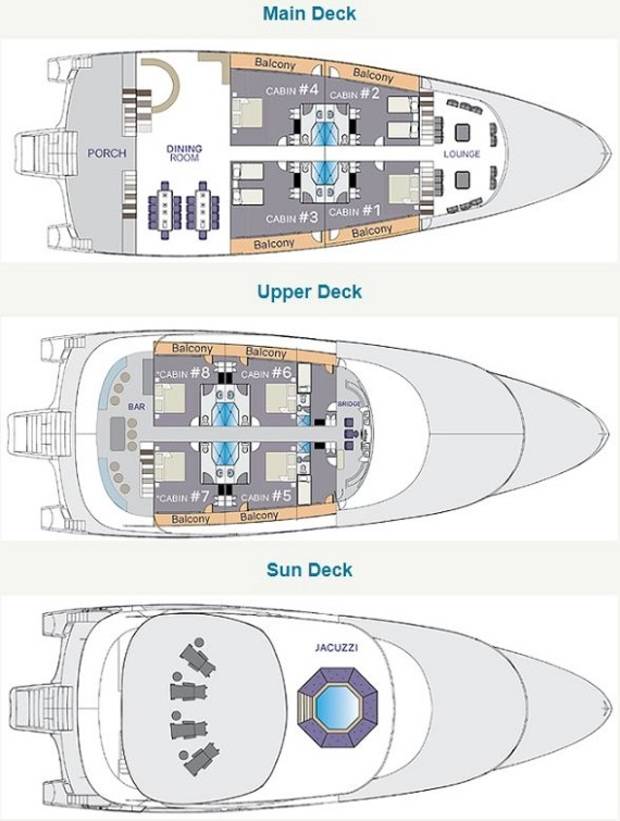
Specifications
- Year of construction: 2018
- Type: Trimaran Power Engine
- Length: 125 feet (38m)
- Beam: 43 feet (13m)
- Draft: 6.2 feet (1.9m)
- Capacity: 16 passengers
- Main engines: 2 x Scania Diesel Engines DI13 070M 550HP
- Max speed: 11 knots
- Water maker: 2 X 1200 Gallons / day
- Crew: 12
- Exterior: Plastic Polyester (orthophthalic/isophthalic) reinforced with fibreglass
Whats included?
- On-board accommodation
- Transfers in the Galapagos
- Activities/shore excursions and specified
- All meals during the cruise
- Standard non-alcoholic beverages
- Snorkelling and wetsuit gear
What’s not included?
- International and internal airefares
- Arrival/departure taxes or reciprocity fees, visa fees where applicable
- Galapagos national park fee US$100 per person
- Transit control cards US$20 per person
- Alcoholic beverages
- Gratuities
- Any items not mentioned as included

